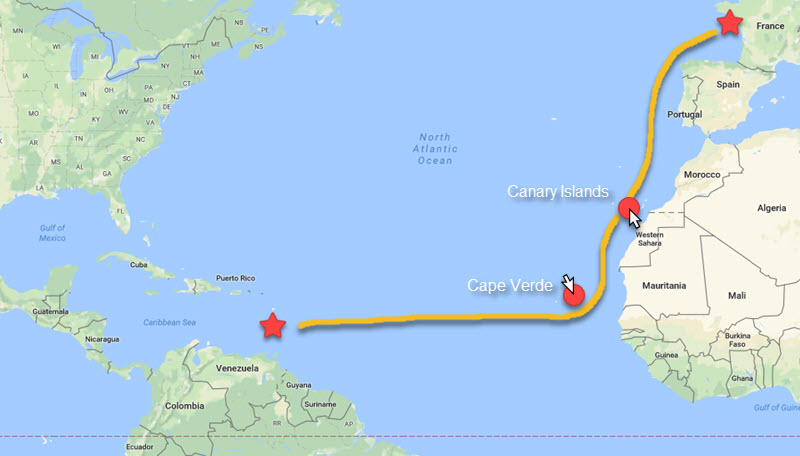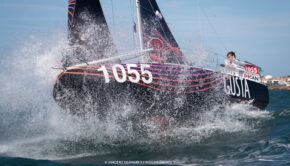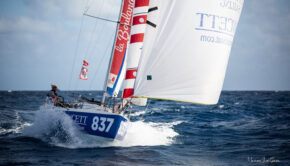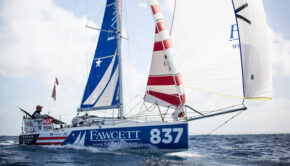Mini Transat: Production Fleet Finishing
Published on November 16th, 2017
(November 16, 2017; Day 15) – Since the leaders of the Mini-Transat La Boulangère have finished, teams are following into the finish, especially in the Production boats fleet, and will continue to over the next few days.
Prototypes
1 Ian Lipinski (Griffon.fr) finished Nov. 14, 13d 00h 22mn 34s
2 Jorg Riechers (Lilienthal) finished on Nov. 15, 01h 12mn 46s (UTC)
3 Simon Koster (Eight Cube Sersa) finished on Nov. 15, 12h 04mn 10s (UTC)
4 Andrea Fornaro (Sideral) finished on Nov. 15, 13h 58mn 20s (UTC)
5 Keni Piperol (Région Guadeloupe) finished on Nov. 16, 1h 19mn 15s (UTC)
Production boats
1 Erwan Le Draoulec (Emile Henry) finished on Nov. 16, 2h 50mn 15s (UTC)
2 Clarisse Crémer (TBS) finished on Nov. 16, 12h 15mn 2s (UTC)
3 Benoît Sineau (Cachaça 2) finished on Nov. 16, 14h 19mn 2s (UTC)
4 Tanguy Bouroullec (Kerhis Cerfrance) finished on Nov. 16, 14h 36mn 17s (UTC)
5 Thomas Dolan (offshoresailing.fr) finished on Nov. 16, 14h 57mn 10s (UTC)
Class news – Race news – Tracking – Facebook
Race Facts
· 21st edition
· 4,050 miles to cover between La Rochelle – Las Palmas in Gran Canaria and Le Marin (Martinique)
· 81 skippers at the start
· 10 women
· 11 nationalities
· 20 years: age of the youngest skipper in the race: Erwan Le Draoulec
· 62 years: age of the oldest skipper in the race: Fred Guérin
· 25 prototypes
· 56 production boats
· 66 rookies
· 15 ‘repeat offenders’
Background
With an overall length of 6.50m and a sail area pushed to the extreme at times, the Mini Class offers incredibly seaworthy boats. Subjected to rather draconian righting tests and equipped with reserve buoyancy making them unsinkable, the boats are capable of posting amazing performances in downwind conditions… most often to the detriment of comfort, which is rudimentary to say the least.
The Mini Transat has two legs to carry the fleet from La Rochelle, France to Martinique, West Indies. The leg from La Rochelle to Las Palmas de Gran Canaria is a perfect introduction to proceedings before taking the big transatlantic leap.
The first leg starts on October 1, with the fleet thrust into the Bay of Biscay which can be tricky to negotiate in autumn, while the dreaded rounding of Cape Finisterre on the north-west tip of Spain marks a kind of prequel to the descent along the coast of Portugal. Statistically, this section involves downwind conditions, often coloured by strong winds and heavy seas. Making landfall in the Canaries requires finesse and highly developed strategic know-how.
The second leg begins on November 1, with the solo sailors most often carried along by the trade wind in what tends to be a little over two weeks at sea on average. Due to a storm, the fleet is being routed south to Cape Verde before heading west. At this point, there’s no way out: en route to the West Indies, there are no ports of call. The sailors have to rely entirely upon themselves to make Martinique.
Source: Aurélie BARGAT | Effets Mer










 We’ll keep your information safe.
We’ll keep your information safe.